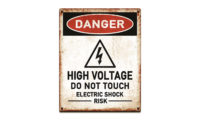Editor's note: While the following is not specifically about workplace safety, OSH managers may find Ms. Palm's recommendations useful when dealing with millennial employees.
Manufacturers across the nation are facing an industry-wide workforce shortage. Between the aging workforce and fewer graduates seeking careers in the trades, the gap is growing, rapidly. The struggle to attract and retain talent is evident. Industry leaders are asking: How do manufacturers in the modern age create an appealing culture for the next generation?
Fortunately for leaders in manufacturing, the business world at large has invested heavily in identifying ways to better engage millennials in the workforce. To better understand the ways in which an organization can speak to the millennial generation, start by understanding their motivation.
Clearly communicate company goals to attract talent, foster loyalty, and improve retention
The article “Why Millennials Care About Purpose Driven Businesses,” suggests that a drive for authenticity, truth, and transparency are primary factors in the decision to work with or for a business. This generation is attracted to organizations who clearly state their vision and communicate it every level of the organization. They seek purpose-driven organizations who can point to a positive outcome for all involved in the organization; leadership, employees, and customers.
To summarize an HR.com article about motivating the millennial generation, clearly communicating your organization’s mission or vision will unify your staff. Once your team understands how they are contributing to the overall company vision, they will be excited to work toward a common goal, and motivated to help the organization succeed.
Ten years ago, it was common to find workers who have been with their current employer for the last 25 years, happily working 40 hours a week and satisfied with their position. Not only did these individuals stay in the same organization throughout the course of their careers, but often they remained in the same role until retirement.
Now, fewer businesses experience the luxury of a consistent core staff, and frequent turnover is much more common. Facilities across the country are challenged with addressing shortages in crucial leadership and skilled roles. As more millennials continue to enter the workforce, employers must also adjust to working with this younger, mission-driven generation of employees.
Millennials are looking for more than just a paycheck
Regardless of the type of industry where they work, young adults entering the workforce who were born between 1982 and 2004 are looking to feel a sense of purpose in the work they do.
To retain this generation of workers, help them understand the connection between the tasks they complete each day and the impact their work has on the company. Money isn’t as significant of a concern for this generation, as they are more focused on their need to know how their work positively affects others.
A mission-driven workforce reduces cost
Manufacturing isn’t the only industry striving to attract talent, and as a result, the connection between a motivated, inspired workforce and productivity has frequently been documented over the last few years. According to the Harvard Business Review, inspiring employees pays for itself in returns on productivity.
Promoting a company culture with a shared vision not only improves the productivity of your staff, but it can also help to attract new employees with the same goals, and can even increase retention of dedicated employees. The results of a study conducted through LinkedIn concluded that “employees who feel like their work creates positive impact are more likely to feel fulfilled, promote their company and stay on the job longer.”
Invest in a company culture that celebrates and communicates a shared vision, and you’ll your team will be more driven to work together. You can’t afford to avoid digital marketing in today’s day and age, so start reframing your mission or company vision and clearly communicate it both internally and externally.
A shared vision mission and purpose unites your team
What is the vision for your manufacturing organization? Is it communicated to your staff at every level of the organization? If you are unable to express your organization’s purpose at every level of your organization and in all your hiring materials, your staffing efforts could fall short of your goals.
As competition in the manufacturing landscape increases and the existing workforce ages, companies are faced with the challenge of differentiating themselves to attract and retain talent. Stop marketing products alone and start to market your true brand; be transparent about your company vision and goals, and you’ll in turn attract mission-driven talent.
Source: The Association of Equipment Manufacturers (AEM)
Subscribe to the AEM Industry Advisor for more expert perspectives.








